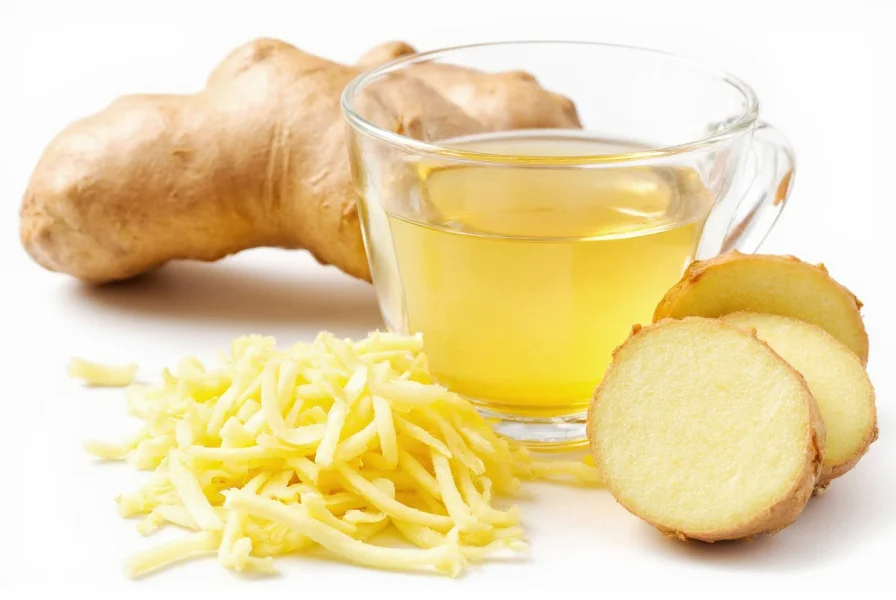Ginger has been used for thousands of years across multiple cultures for both culinary and medicinal purposes. Modern research continues to validate many traditional ginger uses while discovering new applications for this powerful rhizome. The active compounds in ginger, particularly gingerols and shogaols, deliver potent anti-inflammatory and antioxidant effects that support multiple body systems.
Science-Backed Health Benefits of Ginger
Multiple clinical studies confirm ginger's effectiveness for various health concerns. A comprehensive review published in Nutrients journal found ginger significantly reduces nausea and vomiting associated with pregnancy, chemotherapy, and surgery. The anti-inflammatory properties work by inhibiting pro-inflammatory cytokines and enzymes like COX-2, similar to some pharmaceutical approaches but without the same side effects.
For digestive health, ginger accelerates gastric emptying and reduces symptoms of functional dyspepsia. Research in the World Journal of Gastroenterology demonstrated that ginger increases digestive enzyme activity while reducing intestinal inflammation. These ginger uses for digestion make it particularly valuable for people with irritable bowel syndrome (IBS) and other digestive disorders.
| Ginger Form | Best Uses | Recommended Amount |
|---|---|---|
| Fresh ginger root | Cooking, tea, smoothies | 1-2 inches daily |
| Dried ginger powder | Baking, capsules, supplements | 1-1.5 grams daily |
| Ginger tea | Nausea relief, digestion, colds | 2-3 cups daily |
| Ginger extract | Therapeutic doses for inflammation | Follow product instructions |
Practical Ginger Applications for Daily Wellness
Understanding how to use ginger effectively maximizes its benefits. For immediate nausea relief, chewing a small piece of crystallized ginger or sipping ginger tea provides quick results. The compounds in ginger work directly on the gastrointestinal tract and central nervous system to reduce nausea signals. This makes ginger uses for motion sickness particularly valuable for travelers.
When addressing inflammation, consistent daily consumption yields better results than occasional use. Adding freshly grated ginger to morning smoothies or stir-fries incorporates this powerful root into your regular diet. For targeted pain relief, topical ginger creams applied to sore joints provide localized anti-inflammatory effects through the skin.

Culinary Applications of Ginger
Chefs worldwide value ginger for its ability to enhance flavors while providing health benefits. In Asian cuisine, fresh ginger forms the flavor base for countless dishes, from stir-fries to soups. The compound zingerone develops when ginger is cooked, creating a warm, spicy-sweet flavor profile that complements both savory and sweet dishes.
When cooking with ginger, match the preparation method to your desired outcome. Raw ginger provides the strongest medicinal compounds but has a sharper bite. Lightly cooked ginger offers a more mellow flavor while retaining significant health benefits. For baking, dried ginger powder delivers consistent flavor and the concentrated gingerol content makes it ideal for gingerbread and other spiced treats.
Safety Considerations and Potential Interactions
While generally safe, certain ginger uses require caution. People taking blood thinners should consult their doctor before consuming therapeutic doses of ginger, as it may increase bleeding risk. Those with gallstones should monitor their response, as ginger stimulates bile production. The recommended daily limit for most adults is 4 grams of ginger in any form.
Pregnant women can safely use ginger for morning sickness relief, with studies showing effectiveness at doses of 1-1.5 grams daily. However, women close to delivery should consult their healthcare provider due to potential effects on blood clotting. Children over 2 years can use ginger in food amounts, but therapeutic doses require pediatric guidance.
Traditional Ginger Uses Across Cultures
Traditional medicine systems have utilized ginger for centuries. Ayurvedic practitioners recommend ginger to balance kapha dosha and improve digestion. Traditional Chinese Medicine uses ginger to warm the body and treat cold-related conditions. In West African folk medicine, ginger serves as a remedy for respiratory infections and pain relief.
These traditional ginger uses often align with modern scientific findings. The warming effect recognized in traditional systems corresponds to ginger's ability to improve circulation and reduce inflammation. Many cultures independently discovered ginger's digestive benefits, now confirmed by contemporary research on gastric motility and enzyme activity.
Implementing Ginger Into Your Wellness Routine
Start incorporating ginger uses gradually to assess your tolerance. Try adding 1/4 to 1/2 teaspoon of freshly grated ginger to your morning tea or smoothie. As your palate adjusts, increase to 1 teaspoon daily. For therapeutic benefits, consistent daily consumption works better than occasional large doses.
Create a ginger-infused oil by steeping sliced ginger in olive oil for 2-3 weeks. This versatile preparation works for cooking, massage, or as a base for homemade remedies. When selecting ginger, choose firm, smooth roots with no soft spots. Store unpeeled ginger in the refrigerator for up to three weeks or freeze it for longer storage.
Frequently Asked Questions
What are the most effective ginger uses for digestion?
Ginger stimulates digestive enzymes and accelerates gastric emptying. Consuming 1-2 grams of fresh ginger 30 minutes before meals improves digestion, reduces bloating, and alleviates symptoms of functional dyspepsia. Ginger tea after meals helps prevent indigestion and supports nutrient absorption.
How much ginger should I use daily for inflammation relief?
For inflammation management, research suggests 1-2 grams of fresh ginger daily (about 1 inch of root). This can be consumed as tea, added to meals, or taken as standardized extract. Consistent daily use for 4-6 weeks typically yields noticeable improvement in inflammatory conditions like osteoarthritis.
Can ginger help with morning sickness during pregnancy?
Yes, multiple clinical studies confirm ginger's effectiveness for pregnancy-related nausea. The recommended dose is 1-1.5 grams daily, divided into smaller doses throughout the day. This can be consumed as ginger tea, capsules, or crystallized ginger. Most women experience relief within 4 days of consistent use.
What's the difference between fresh and dried ginger uses?
Fresh ginger contains higher levels of gingerol, providing stronger anti-nausea and digestive benefits. Dried ginger powder has more shogaol due to the drying process, offering enhanced anti-inflammatory effects. For immediate nausea relief, fresh ginger works best, while dried ginger may be more effective for chronic inflammation management.
Are there any side effects from regular ginger consumption?
Most people tolerate ginger well at culinary doses. Higher therapeutic doses (above 4 grams daily) may cause mild heartburn, diarrhea, or mouth irritation in some individuals. Ginger may interact with blood thinners and diabetes medications, so consult your healthcare provider if taking these medications before using ginger therapeutically.











 浙公网安备
33010002000092号
浙公网安备
33010002000092号 浙B2-20120091-4
浙B2-20120091-4